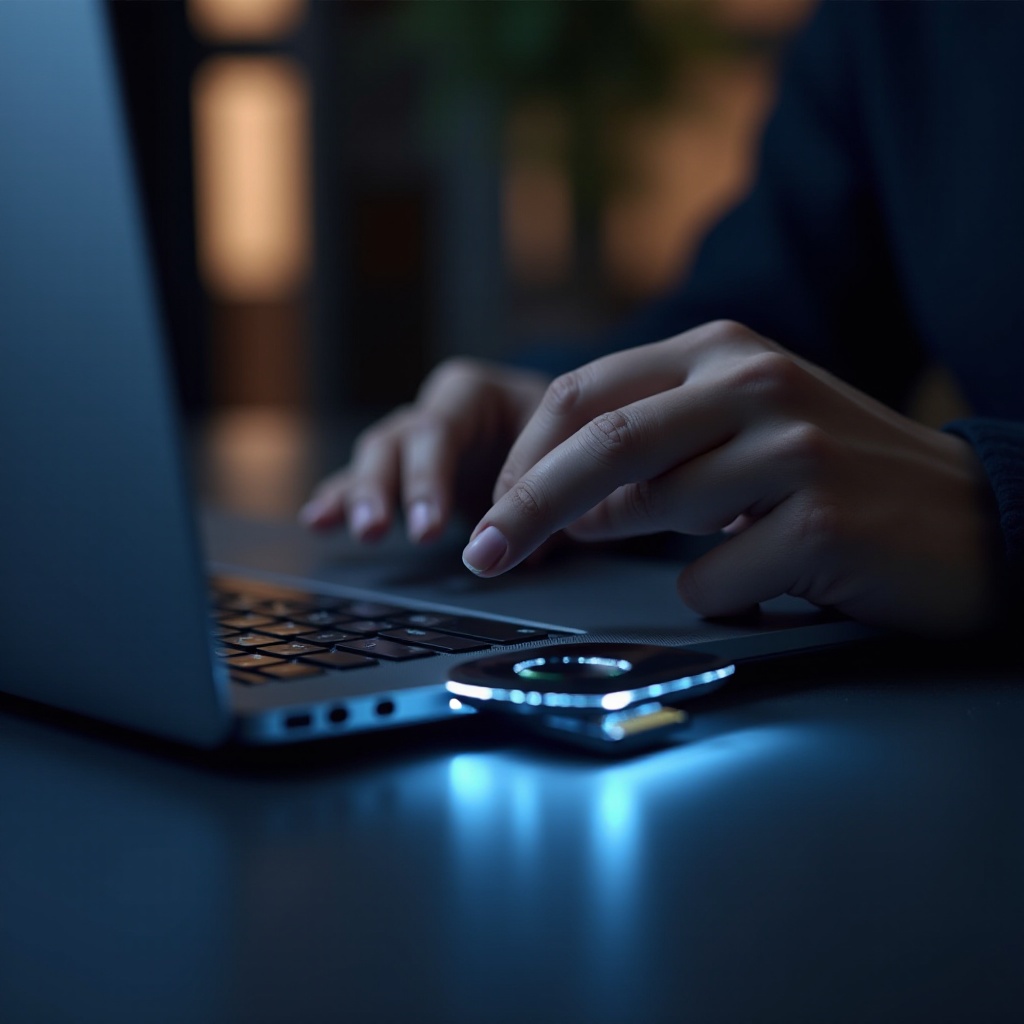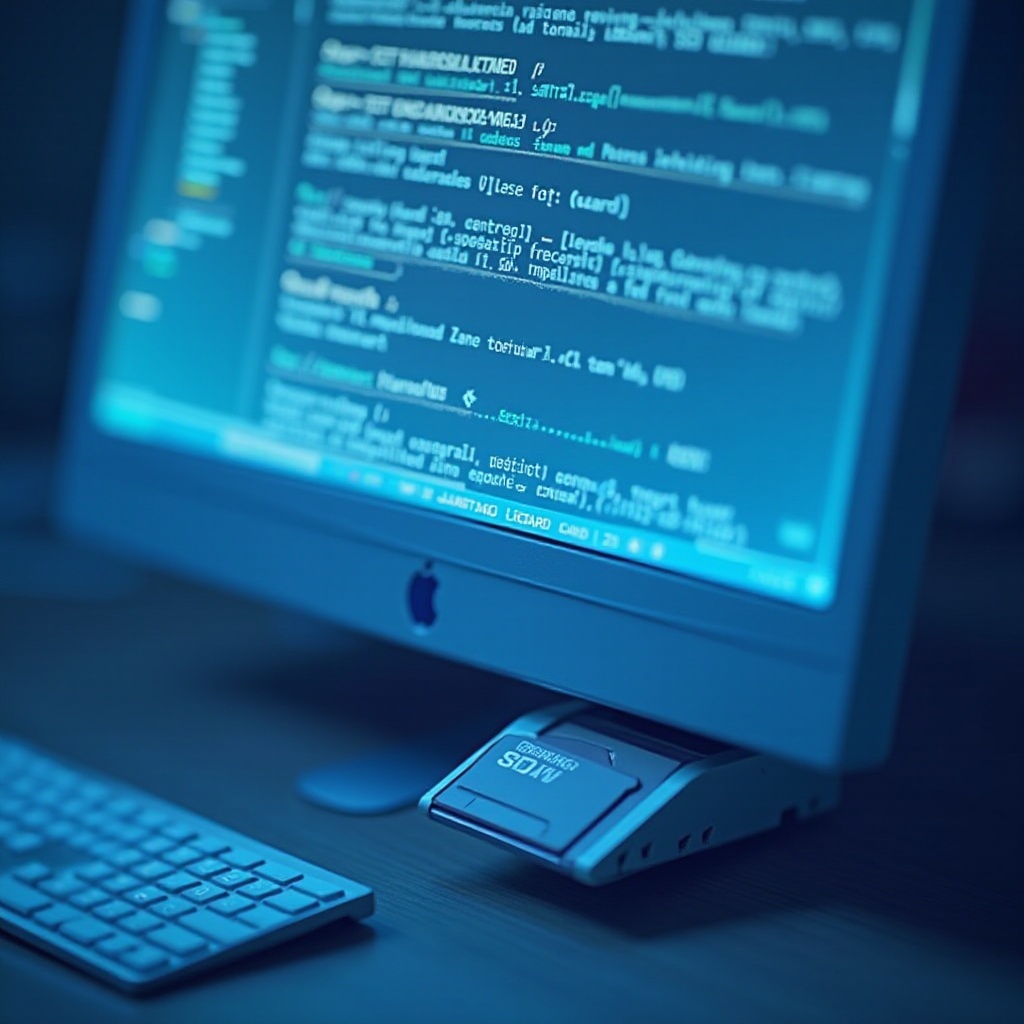Introduction
Dealing with an SD card that doesn’t show up on your computer can be frustrating, especially when it holds essential files and memories. These small storage devices are indispensable for photographers, videographers, and tech users, making it possible to transfer and store data conveniently. However, when they fail to appear on your computer, accessing stored data becomes challenging. This guide explores effective methods to diagnose and resolve SD card detection issues. By following these steps, you can restore access to your SD card and minimize the risk of data loss.

Understanding the Issue
Before exploring solutions, it’s helpful to understand why your SD card might not be recognized by your computer. Various factors can contribute to this problem, ranging from simple connection issues to more complex software glitches.
What Causes SD Card Detection Problems
Several factors can cause an SD card to not appear on your computer. Common issues include:
- Physical damage: Bent pins or a damaged card can hinder connection.
- Driver issues: Outdated or corrupt drivers can prevent your computer from recognizing the SD card.
- File system errors: Corrupted files or unsupported file systems can render the card unreadable.
- Faulty card reader: A malfunctioning reader may fail to detect the card.
Addressing these causes will guide us to potential solutions.
Initial Troubleshooting Steps
Start with basic checks to identify the root cause of the problem. These initial steps can often quickly resolve the issue without the need for more complicated solutions.
Check Physical Connections
- Inspect the SD card: Look for signs of physical damage such as cracks or bends.
- Clean the card’s contacts: Use a dry cloth to gently wipe it and remove dust.
- Ensure proper insertion: Confirm that the card is correctly inserted into the slot.
Test on Another Device
- Use a different card reader: Experiment with the card on a separate reader or device.
- Try on another computer: Insert the card into another computer to check recognition.
These steps help determine if the problem is with the SD card or the computer.
Software Solutions
If initial checks don’t resolve the issue, proceed to software-based solutions. These steps address potential driver issues and system errors that may prevent recognition.
Update or Reinstall Drivers
- Access Device Manager: Right-click on Start and select Device Manager.
- Find the SD card reader: Look under “Disk drives” or “Universal Serial Bus controllers.”
- Update driver: Right-click on the device and choose “Update driver.”
- Reinstall if needed: Select “Uninstall device,” then restart to reinstall drivers automatically.
Use Disk Management Tools
- Open Disk Management: Press Windows + X and select Disk Management.
- Find your SD card: Check if the card is listed.
- Format if necessary: If marked as unallocated, format it (ensure data backup first).
Assign a Drive Letter
- Access Disk Management: Open Disk Management as before.
- Right-click on the SD card: Choose “Change Drive Letter and Paths.”
- Assign a new letter: Select “Add” or “Change” to assign or modify the drive letter.
These software interventions can resolve more complex recognition issues effectively.
Repairing the File System
In cases where file system errors prevent SD card detection, repairing the file system becomes crucial.
Use Built-in Repair Tools
- Run CHKDSK: Open Command Prompt as admin and type
chkdsk X: /f(replace X with your card’s drive letter). - Utilize Windows error-checking: Right-click on the SD card in File Explorer, select “Properties,” then “Tools,” and finally, “Check.”
Employ Third-Party Software
- Download a reliable tool: Use trusted applications like EaseUS Partition Master or MiniTool Partition Wizard.
- Follow software instructions: These tools guide you through scanning and fixing file system errors.
Repairing the file system can recover access to data on a problematic SD card.

Advanced Troubleshooting
Should the previous steps fail, advanced methods may be necessary to address underlying recognition problems.
Using Command Prompt
- Access Command Prompt as Admin: Search for CMD, right-click, and select “Run as administrator.”
- Type diskpart: Enter this command, and then
list diskto see all disks. - Select the problematic disk: Use
select disk Xandcleancommands to clear issues (note: this erases all data).
BIOS Configuration Adjustments
- Access BIOS settings: Restart your computer and press the designated key (often F2 or DEL) to enter BIOS.
- Check boot priorities: Ensure the SD card reader is enabled and has a proper boot sequence.
These advanced steps are typically used if other troubleshooting measures have not succeeded.
Preventive Measures
To minimize future connectivity issues, adopt preventive practices for handling and maintaining your SD cards.
Proper Handling and Storage Tips
- Avoid physical damage: Handle cards carefully and store them in protective cases.
- Prevent exposure: Avoid extreme temperatures, water, and magnetic fields.
Regular Data Backups
- Schedule backups: Regularly transfer data to a computer or cloud storage.
- Use reliable software: Consider tools like Acronis or Backblaze for automated backups.
Being proactive about care and data management greatly reduces failure risks.

Conclusion
An SD card that fails to appear on your computer can disrupt your workflow or media enjoyment. By methodically following these troubleshooting steps—from physical checks and software updates to advanced methods—you can effectively resolve detection issues. Always handle your SD cards with care and maintain regular backups to protect against future problems.
Frequently Asked Questions
Why is my SD card not showing up, but I can hear a sound when it’s inserted?
When you hear a sound but can’t see the card, it often indicates a driver issue. Update or reinstall drivers to resolve this.
Can a virus cause my SD card to not appear on my computer?
Yes, malware can corrupt file systems or drivers, causing recognition issues. Run antivirus scans regularly.
Is it safe to format my SD card if it’s not recognized?
Formatting erases all data, so use it as a last resort. Ensure all other options are exhausted and data is backed up where possible.


